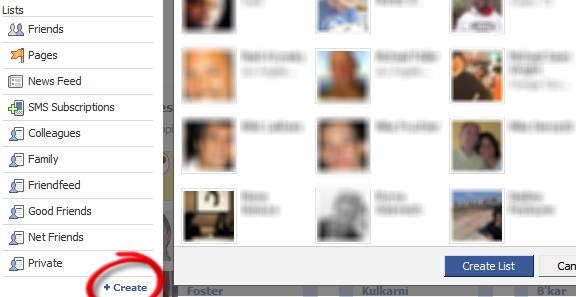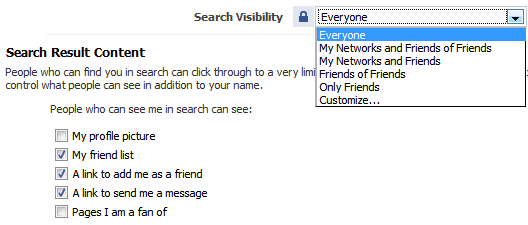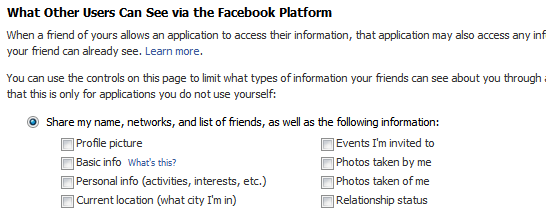When you want to do a one-on-one video chat with someone else, what do you use? The first thing that probably comes to mind is Skype.
While Skype is a great service, it isn’t practical for when you just want to get a video chat going (both sides must have the software). Plus, they’ve got some legal troubles brewing. Web conferencing system and even Google (
) chat via video require plugins or some getting used to.
Perhaps that’s why we like TinyChat (
)’s new Peer-to-Peer chat service that allows you to set up a one-on-one conversation with a friend in literally seconds. No plug-ins, no software, not even a username required. The only thing you literally have to do is pick a URL for your video on the p2p.tinychat.com domain.
To test this thing out, Mashable’s () Christina Warren and I just went to the same link (let’s say http://p2p.tinychat.com/anyroom). Once we were there, TinyChat connected to our webcams and … presto! The live chat was working. It even blocks others from entering once there are two participants, so you know your privacy is protected.

TinyChat’s system is dead-simple, and we love that. It’s an easy solution when you just want to chat with your friend or colleague with no hassle. And we’re fans of anything that takes hassle out of our lives.
Disclosure: Mashable has partnered with TinyChat to create The Mashable Lounge, our live Twitter (
) chatroom.
Rabu, 30 September 2009
Forget Skype: TinyChat Launches Dead-Simple Video Chat
Selasa, 22 September 2009
Yahoo Revamps Search Results (And Prepares Them for Bing)
Fresh off of its homepage redesign (and the Microsoft search deal), Yahoo has launched a full revamp of its search results page.
The new search page, which is now active for all users, adds a new discovery bar just under the search box, adds a left-hand navigation column (not unlike Bing (
)), and aligns more with the functionality and color scheme of the new widget-based Yahoo homepage.
So what’s the change look like? Perhaps the best way to assess the differences is to do a before and after comparison. First, here is what Yahoo Search looked like before the upgrade:

Study it. Notice the right hand sidebar, the old color scheme, and the search bar in the far left hand corner.
Now, take a look at the redesign:

Here are some of our observations:
- Left hand navigation: The new Yahoo search page is focused on creating a relevant experience. If you search “Mashable (
),” the left-hand navigation comes up with similar search terms and related information. If you search “puppies,” you’ll get a list of searches of different dog breeds, the American Kennel Club, Iams, and Flickr (
) (so you can share those puppy pictures).
- Explore related concepts: This is a dropdown right under the search bar. Clicking on it adds even more related searches that you can explore.
- People Search: Following in the footsteps of Bing, Yahoo Search’s related concepts takes a twist when you search for people. It links you to that person’s Facebook (
), Twitter (
), and other social networks.
- Design: The new search feels like an extension of the new Yahoo homepage. That’s a good thing.
The new search does two things in the end. First, it positions Yahoo for its eventual Bing switchover. The left-hand navigation bar is just like Bing. These changes should help smooth the transition.
More importantly though, it improves the search experience a great deal. It provides some useful features and more continuity in the search experience. It’s nice to see that Yahoo isn’t just going to abandon the search experience and that they will innovate until Bing replaces Yahoo’s search algorithm.
Minggu, 20 September 2009
5 Ways to Get Your Blog Indexed by Google in 24 Hours
Written on September 21st, 2009 at 12:09 am by Darren Rowse
5 Ways to Get Your Blog Indexed by Google in 24 Hours
Search Engine Optimization 53 comments
This is a guest-post from AdesBlog.com. Follow Ades on twitter @ades.
We all know that content is king and that if you keep blogging… if you keep doing what you love… the traffic and the money will follow suit. While that’s partially true, there is also things that you can do to:
- Index your newly launched blog fast by major Search Engines
- Increase traffic to your blog
- Improve your SERPs (Search Engine Result Positions)
Why wait right? Content can be king but waiting around for traffic to come by itself is not a good way to start blogging. So let’s start…
Getting Indexed
Let’s say you launched a blog today and want it on Google’s results tomorrow. Can this be done? Yes.
Easiest way to get indexed by major Search Engines is to get mentioned by established blogs. This usually will get your blog indexed within 24 hours. But since we are new (i.e the newly launched blog of ours) I don’t think any blogger want to mention it. So instead of begging other bloggers to notice your newly launched blog, you just have to figure out other ways of getting indexed by Google fast. Can it be done? Absolutely! (All it takes a little effort on your side).
1. Blog Communities
There are few blog related community portals that have a very good rankings in Google and other Major Search Engines Results, they are: MyBlogLog, BlogCatalog, Blogged and NetworkedBlogs, particularly MyBlogLog. This means that if you get your blog on these blog communities, Google will have no other choice but to index your blog. So, go ahead and register for an account on these communities and list your blog on it. Once you are done you will have a page like this, this and this.
What to pay attention: Your blog’s description (have a proper write-up), keywords & tags (add related keywords and tags to your listing, this will be used by other members to find your blog), branding (put your logo, avatars, screenshots etc. have a consistent branding everywhere), and list your blog in the correct category.
2. Site Valuation & Stats Sites
Some of those How Much Your Site Worth? sites have a good ranking in Search Engines. All you need to do is to go there and check how much your site worth. This would create a special page for your blog (like this) and consecutively it would be indexed by Google. Here is a list of worthy sites: WebsiteOutlook, StatBrain, CubeStat, WebTrafficAgents, BuiltWith, WhoIs, QuarkBase, URLfan and AboutTheDomain.
3. Feed Aggregators
List your blog’s feed in these feed aggregators Feed-Squirrel, OctoFinder, FeedAdage. Once you have submitted your feed to these sites, they will keep track of your newly published posts and index them in their site. Whenever someone clicks on the blog post title, he/she will be redirected to your original blog post sending you free traffic and getting your latest posts indexed by Google.
4. Social Sites
Registering account on Social Sites with the same username as your blog’s URL is very effective in getting your blog indexed by Search Engines. Especially for those targeted keywords.
For example, if your blog’s name is WhiteElephant, it’s a good practice to register the same username at twitter as @WhiteElephant, and to create a page in Facebook at www.facebook.com/WhiteElephant. Having a consistent keyword-username on all major Social Sites will help get your blog indexed faster, and at a later stage it will also help build a “brand” for your blog.
So, get account on major Social Sites for your newly launched blog, namely: Twitter, Facebook (create a page for your blog), Digg, StumbleUpon, Delicious etc. By the way, it’s a good pratice to create a separate Social Sites account for each of your projects. This way you can stay focused and post messages that are related to your project. In the long run, this will help build a community that are like-minded around your project.
Note from Darren: it’s worth nothing that many social media sites (like Twitter) use no follow tags on links which means the links don’t really help with SEO. Having said this - it’s still worth getting pages for your keywords/brand as these pages can rank in and of themselves in Google and can help you to have control over numerous search results for the same keyword.
5. Misc Sites
Squidoo is a community website that allows people to create pages (called “lenses”) on various topics. Creating a topic that is related to your blog and then including your feed in that page would help your blog get indexed by Search Engines. Squidoo used to have a really good ranking in Google results, but not so much today. But it’s still ranks well and it shouldn’t be neglected.
ChangeDetection is a website that monitors sites for changes. When you monitor a particular site using ChangeDetection, it will ask you whether you want the notices to be public or private. If you say public, it will be published in their news section. For example; AdesBlog.com got an update today, type of update: text additions etc. This of course will get picked up by Search Engines and Search Engines in return will index your blog.
Technorati is a search engine for searching blogs. According to Wikipedia, as of June 2008, Technorati was indexing 112.8 million blogs and over 250 million pieces of tagged social media. It’s a dying breed, but not just dead yet. You have to definitely register for an account and get your blog listed on Technorati.
That’s it. Once you are done with creating accounts and submitting your newly launched blog in the above mentioned sites, you should see your blog in Google’s Search Results within 24 hours. Most of the time it will appear within the next few hours only.
Lastly, getting indexed is one thing but sustaining that traffic is another. And this is where the Content is King phrase should truly be emphasized. Because, without a good and valuable content, all your effort will be just wasted.
I hope you have found this post useful.
Abdylas Tynyshov (Ades) is a full-time blogger based in Kuala Lumpur, Malaysia. He blogs at http://www.adesblog.com and is the creator of a great freeware color picker tool. You can follow him on twitter at @ades.
What next?
Digg it Save This Page Subscribe to Problogger Leave a comment
Related Posts
Getting Indexed Through Google AdSense How to Get Indexed by Google How to Get Your Domain Indexed by Google After Being Banned Bloggers Reporting Changes in Google Traffic Levels - Sandbox Updated? Google Blog Search Offers Pinging to Get Your Blog Indexed
53 Responses to “5 Ways to Get Your Blog Indexed by Google in 24 Hours”
Well there are other ways to index your blog and website.
Pingler is one of them, and is a very good way to inform other search engines that you have a new blog post or even a new blog.
wow! that’s great post! but i do all of this befor and now my page rank is ONE!
what else should I do ?
Interesting links. I didn’t know that there are so many sites to estimate the worth of your site. Bookmarked this post.
Isn’t it possible to just go on http://www.google.com/addurl/ and simply your blog there and see it up on google in 24 hours or so?
Great list, this will be perfect for my endeavours, thanks!
Wow, some really great tips here!
The only one that I really knew about was the one about social sites. I started using them about 45 days ago and I nearly doubled my traffic with it! (And it keeps growing)
It’s a great way to build up back links and get indexed.
And it’s a lot of fun!
I thought the “how much is my site worth” tips was cool. Because it’s super easy!
Great post, thanks a lot!
Great tips there! Getting listed in Google could sometimes take more than a week! I didn’t know that it could get indexed so fast!
I also didn’t know that MyBlogLog helps to get your blog indexed. LOL.
I’ve something to add too.
I’ve also came across a recent post (How to Make Your Blog Searchable in Google & Yahoo) on my friends blog, Simon Blog.
On his post, he tells that you should add your site to Google Webmaster Central and Yahoo Site Explorer and they will have you indexed pretty fast!
This is great stuff. I didn’t know about a few of these services and I’ll immediately check them out, and get listed. Thanks!!!
These are excellent tips!
In my experience, that is, this is what works for me: Posting daily content over a period of at least several months, on a WordPress blog, with a sitemap plugin, and no other promotion, will get your posts indexed in as little as 4 hours.
That’s a data point.
While a few of the indexing tools you mentioned are known to me, I am not familiar with many of them so this is a useful post to consider when trying to promote a blog or individual blog posts.
If Mybloglog has good SE ranking like you wrote here, that is nice but the site does not always list all my current posts, which gives me the impression that Mybloglog is not updated as efficiently as it can be. It’s late listing my recent posts and this has been going on for a while. Blogcatalog has this problem every now and then as well but seems to be quicker on updates.
I’ve done a few of these steps, like registering with blogcatalog. It does help the search engines find you more quickly.
Again, another great article for blogging newbies like myself. In the quest be narrow or shorten the learning curve with my blog, I find myself reading lots, and lots, and lots of articles. Sometimes, I feel as though I might be getting overwhelmed with the content as some of what I read is not easily digestible. This is definitely not the case with posts on this site. Wow… I must definitely will be back to read many more posts.
Very valuable and practical tips! Thanks for the great list of Site Valuation & Stats Sites.
Darren - Can your blog please keep all references to other sites up to date and accurate.
Those comments about Squidoo are TWO YEARS OLD!
Just in case anybody’s wondering whether Squidoo is doing OK in the Google index, Quantcast currently indicates that traffic is still growing and the site ranks at 157 in Google.
I don’t think that’s a ranking enjoyed by some of the other sites mentioned.
Granted it may have been a valid comment in 2007 but it’s no longer true so far as I am aware. Adult sites are banned from using Squidoo.
While commenting on someone else’s blog isn’t always god for SEo purposes, it is very good at getting your name and blog URL known and noticed by real people who live in the ‘real’ world (some of us do, any way!). the SEO might not be affected, but getting people to click through is, for some, more important .. these are the people who read!!
Thanks for continued great blogging.
David.
Thanks again Darren, for great advice and sharing your space with knowledgeable guests.
Well I just checked my blogs worth and it’s a start
It’s great to see my work paying off
I’m not in the big leagues yet but it’s a start
Thanks as always for a great postMost of the posts like this hardly makes sense, but this one is really worth bookmarking
really helpful, thank you! now I’m registering our blog everywhere like a mad man!
I think you could include also aboutus.com, don’t know how it ranks in Google but it is also very useful,
Good job A! This was informative and I particularly enjoyed the section on blog communities. I will be adding my blog to some those in the coming week.
Cheers!Wow, awesome post. I already had a few of those done but you just gave me so many more options. I’ll be working on this all day. Thanks!
I only had a couple of the steps completed. I went and registered on some the site valuations and site stats. I just went and opened up a new Twitter account that was relevant to my Website. Thanks Darren, I have learned a lot from you in such a short period of time.
This is great advice, and I know what I’ll be spending time on this week!
Thanks for beginning and ending with the “content is king” reminder. All of the other work is fine, but I’m glad we keep remembering that when all that traffic comes, we’d better have something worthwhile to say.Hi guys, thanks for all your comments. I am glad that you have found the post useful.
There are many ways to get listed on Google or if you keep blogging you will still get listed eventually. But the purpose of the post was - How to get listed within 24 hours after you launch your blog. And from my experience the above methods are the best way to achieve this.
Please send your comments in, I am sure there are many other ways and tactics to get listed by Google fast.
Meaningless post, sorry. Getting indexed? And? It means nothing if you don’t rank, and many of the tips here will be worthless when it comes to that.
This is a great list. We all want to get noticed as soon as possible it’s true. I had not know about some of the misc items.
As well - something I am discovering… if you want to get noticed by google. Google Reader is a very valuable tool.
Cheers~
Getting indexed fast has very little effect on it’s own, so of course it’s nice to see your blog and posts there quickly, so you can keep pushing. The key to getting indexed fast is setting up the blog the right way, putting the initial pages up and not blast all content out immediately.
It’s actually quite easy and doesn’t require so many things as covered here (although those help, as like said, getting indexed is not the only thing): Set your blog up with good SEO settings, add a good ping list, set the blog feed at feedburner (activate PingShot), have a XML sitemap and add that sitemap to Google Webmaster tools (+ verify your site there as well while at it). Do this and bookmark your first post at Digg/Delicious and you’re set. It takes 2-6 hours to get blog indexed this way.
As an additional step (not so much for indexing, but because it’ll help in the long run), adding your blog to directories like Ades suggested and registering the domain for max length (e.g. 3 years), help too.
I have tested this many times and it works, in case you’re interested in the topic as much as I am, I have written a 11 step guide about this in my blog, which covers not only getting indexed but getting a good start for your blog in general: http://zemalf.com/blogging/blogging-tips/how-to-get-indexed-by-google/
Wonderful advice for a newbie like me!
I will am going to tweak this advice to help with my new forum/blog!
Fantastic, just logged three sites through mybloglog and am getting visitors from them already.
Hope google picks up these sites too.love this post. so many new ideas for how to spread the word about my blog. i love resource dense posts.
Whoa, octofinder already has had one of my posts on the frontpage.
Also, if you link back to octofinder on the individual post pages they take the nofollow off of your links =)
Great Post and finds!
Well, I try to avoid reading this kind of posts.. But your post is so informative and worthy that I can’t ignore.
Thanks for the nice post :)Any suggestions about Yahoo and Bing as I have noticed that they are not indexing my site as much as Google is doing?
I know there are many of them,but those you gave are the most reliable and can really help your site get indexed by google
This has been very useful–thanks.
Great post. It shows a great understanding of the search engines and this will help many to get their blogs indexed quicker by all major search engines, not just Google.
Some solid advice here for not only getting indexed quicker with Google but also for building traffic to your blog.
Wesley Craig Green
The Geek EntrepreneurGreat tips and tricks! I was familiar with everything except the links under, “2. Site Valuation & Stats Sites” I have never heard of those. I am off to check them out now.
Wow. These are way too hard.
Install Google Desktop and/or the Google Toolbar. Browse around your site. Done.
Google desktop keeps an eye on where you go and indexes the sites that you visit. Whenever I am working on any of my sites and forums there are always two IPs. My local one and one from Google. It hits every page I hit in my browser.
I don’t have any connections to Seth Godin other than being a fan of his presentations, blog, and books. But the Squidoo mention (and accompanying link) is way outdated. Squidoo ranks just fine now. Pull up some PR on any “lens” or even the homepage and you will see that’s not really true anymore.
Spot on with the rest of the article. Good stuff!
Don Makoviney
Man I scanned the comments to see if anyone had already mentioned what I wrote in my previous comment. I guess I missed Katherine’s. My bad.
Carry on :-)
Don Makoviney
Nice post and thanks for revealing these useful resources. For all you newbies out there, you can also create one article and submit it to various directories that have a high PR. This will help your ranking on google. And it can get you some traffic aswell
Regards,
JohnnyKatherine and Don Mak… that particular link about Squidoo was given precisely for the reason to point out the event in the past (2007) about Squidoo being given less importance in Google results. Perhaps linking the words “not so much today” to the old link may have caused the confusion. I hope it’s clear now.
Nevertheless, sorry for the confusion and thanks for your feedbacks!
Great post! Lots of super helpful information here. Thanks!!
how about the ping services?
i think those are also important :-)
Oh wow, I have never thought of this, I can’t believe you could do that. Usually, it will take me a few days to index my new blogs. I think that is good enough, there is no need to get your blog indexed by Google in just 24 hours.
But in another way, I think this so cool, many people really want to do this. I think that if your pages could also get indexed so fast, that would be great!You made my day, Thanks for the cool tips and links even though I know some of them already but the new once are very useful. I really appreciate.
Good list, a few new resources to check out (the feed aggregators).
I agree with Antti Kokkonen’s comment above - by creating an xml sitemap, submitting it to and verifying your site with Google webmaster tools, you can get all kids of cool stats about if/when and how many pages Google has indexed from your site.
There are lots of free sites that will create an xml sitemap for you, xml-sitemaps.com for example.
Great tips. I’ve done these many times and seen Google index the site fairly quickly.
Just saw your blog’s net worth. Holy Shit! Are you married? :)
Great tips - I’ve instituted several on your list. Thanks!
Awesome and very timely article!
Just completed a wordpress/thesis overhaul for a client and am about to start the promotion process.
Thanks for the tips - am putting them into practise as I type this! :)
Most of these I’ve done already. I haven’t visited any of the site valuation sites yet though. I’ll check those out.
Very nice list of things to do with your blog to get it noticed and indexed. A few new ones that I was unaware of previously. Thanks!
Rob - LexiConn
Comments will be closed off on this post 90 days after it is published. Apologies to those this impacts but it's a regrettable and temporary measure to combat a growing comment spam problem. See our most recent posts where you can comment here.
Leave a Reply
Selasa, 15 September 2009
Fast Flip: Google Launches a New Way to Read the News
Is reading online news broken? GoogleGoogle
seems to think so as they just launched Google Fast Flip, a Google Labs experiment that’s designed to help you flip through news online as fast as you would if you were holding a print magazine or paper.
Fast Flip is essentially just a funky way to flip through articles from three dozen Google partners including The New York Times, The Washington Post, and Fast Company. Partners share in advertising revenue generated through the labs experiment.
With Fast Flip you can flip through snapshots of the day’s popular news, drill into specific sections and topics, or narrow stories by publisher source. Once you select a story, you can view the article in its totality and use the arrows to flip to the previous or next story.
Fast Flip comes with additional features like the ability to share stories via email, story liking, dynamic content based on your viewing experience, and mobile-friendly versions.
According to Google’s post on the launch, the point is to replicate the magazine or print reading experience and make browsing stories faster. The company writes:
“Fast Flip is a new reading experience that combines the best elements of print and online articles. Like a print magazine, Fast Flip lets you browse sequentially through bundles of recent news, headlines and popular topics, as well as feeds from individual top publishers. As the name suggests, flipping through content is very fast, so you can quickly look through a lot of pages until you find something interesting.”
On first look, Fast Flip feels like a bit flop. While certainly unique, it’s likely to appeal to a very small segment of online news consumers. Sure, the online news reading experience could be improved, but Fast Flip is more of a tangential approach than it is a step in a revolutionary direction.
What’s your take on Fast Flip? Share your thoughts in the comments.
Have a great news!
The Lost Symbol by Dan Brown - Hardcover - Random House
ABOUT THIS BOOK
Dan Brown's new novel, the eagerly awaited follow-up to his #1 international phenomenon, The Da Vinci Code, which was the bestselling hardcover adult novel of all time with 81 million copies in print worldwide, will be published in the U.S. and Canada by Doubleday on September 15, 2009.
THE LOST SYMBOL will have a first printing of 5 million copies, and it will once again feature Dan Brown's unforgettable protagonist, Robert Langdon. Brown's longtime editor, Jason Kaufman, Vice President and Executive Editor at Doubleday said, "Nothing ever is as it first appears in a Dan Brown novel. This book's narrative takes place in a twelve-hour period, and from the first page, Dan's readers will feel the thrill of discovery as they follow Robert Langdon through a masterful and unexpected new landscape. THE LOST SYMBOL is full of surprises."
Dan Brown's popularity continues to grow. The film of The Da Vinci Code was a #1 box office smash when it was released by Columbia Pictures in May 2006 with Ron Howard directing and Tom Hanks starring as Robert Langdon. Box office receipts were $758 million. The same team will release Angels and Demons theatrically worldwide on May 15, 2009.
RELATED LINKS
Minggu, 13 September 2009
10 Solid Tips to Safeguard Your Facebook Privacy
10 Solid Tips to Safeguard Your Facebook Privacy
Sep. 13th, 2009 By Mahendra Palsule
Facebook statistics show that it has 250 million active users each with an average 120 friends. More than 1 billion photos are uploaded every month by its users, over 70% of whom use applications like games and quizzes in Facebook. Unfortunately, most users don’t know the implications of entering personal information, making friends, and playing games on Facebook.
This guide will show what you can (and cannot) do to safeguard your Facebook privacy.
1. Organize Friends in Lists
What do you do when your boss, mother-in-law, or a casual web acquaintance sends you a friend request on Facebook? Use Friend Lists. Friend Lists are the foundation of your Facebook privacy settings. Select Friends from the top menu, and use the Create link to create friend lists like Co-workers, Family, College Friends, etc. Your friends can’t see your lists, so you can name them whatever you like.
Tip: On your left sidebar, all your friend lists may not show up by default. Click More to see all of them, and drag and drop those you want above the separator.
2. Customize Profile Privacy
Click Settings > Privacy Settings > Profile. Select which parts of your profile will be seen by whom.
If you choose Customize in the drop down, you can be more specific. This is where the Friend Lists you created before become really useful.
Also go to the Contact Information tab and choose how you want your contact information to be shared on the Internet.
3. Set Facebook Privacy Level of Photo Albums
On the Photos tab of your profile page, click Album Privacy. Here again, you can use your Friend Lists to set the privacy for each photo album.
Note that your profile pictures go into a special album that is always visible to ALL your friends.
4. Restrict Search Visibility
Click Privacy > Search to set your visibility when someone searches Facebook for people. This is an important way to safeguard your Facebook privacy. You can also select what will be visible in the search results.
5. Control Automatic Wall Posts and News Feed Updates
Your actions in Facebook such as comments, likes, appear as highlights on ALL your friends’ home pages. You cannot use friend lists here, only turn them on or off.
Go to Privacy > News Feed and Wall and choose whether you want your boss or ex-girlfriend to know that you’re in a relationship.
6. Set Facebook Wall Privacy
Go to your profile page, click Options > Settings under the status box.
Here you can control whether your friends can post to your Wall, and who can see the posts made by your friends.
7. Avoid Appearing in Advertisements
Facebook has two types of advertisements: third-party and Facebook. Third-party advertisements are currently not allowed to use your pictures, but there is a setting to disallow it if it is allowed in the future. Go to Privacy > News Feed and Wall > Facebook Ads tab to turn this off.
The Facebook ads shown to your friends are about ‘social actions’ like becoming a fan of something. You can turn this off at the bottom of the page.
8. Protect Yourself from Friends’ Applications
Go to Privacy > Applications, and click the Settings tab and uncheck all the boxes. These settings control what information about you is visible to applications installed by your friends. By default, these are set to visible. This means that your religious, sexual, and political preferences, pictures, etc. are readily available to one of the million worldwide Facebook application developers, each time any of your friends takes a quiz, plays a game, or runs any other Facebook app. This is obviously a Facebook privacy issue.
This is the most commonly misunderstood aspect of Facebook privacy. These settings control what applications installed by your friends can see about you, even if you don’t install the application yourself.
Why is this important? Because these settings will not change anything about what you are sharing with the applications you install yourself. For that, go to the next step.
9. Privacy from Your Applications
There is no way to control what applications see about you; it is an all-or-nothing affair. Take this quiz developed by the American Civil Liberties Union to check what anonymous application developers can know about you and your friends each time you take a quiz.
The Burton Group’s Identity Blog features the Facebook Privacy Mirror, an application that you can use to find out what applications know about you and your friends. If you really want to see exactly what profile data of each of your friends is visible to application developers, Privacy Mirror shows it in detail.
The only thing you can do is to authorize only those applications you require and trust. Go to Settings > Application Settings from the top menu. Change the drop-down from Recently Used to Authorized. Here you can see all the applications you have authorized to get access to ALL your profile information. Remove the ones you no longer need.
Also check the list of applications Allowed to Post and Granted Additional Permissions to remove unwanted ones.
10. Quitting Facebook? Delete, Don’t Just De-Activate Your Account
You can easily deactivate your account in Facebook from the Settings page. But deactivation will retain all your profile information within Facebook, including pictures, friends, etc. If you want to permanently delete your Facebook account, click here to submit a deletion request. Note that:
- There is an unspecified delay between submitting your delete request and actual deletion.
- If you login to Facebook, your deletion request is automatically cancelled.
- There doesn’t seem to be any way to confirm that your request was completed.
- Even after permanent deletion, Facebook says that copies of your photos may remain on their servers for technical reasons.
Also, note that once in a while, there is news of a Facebook hack or leak that can expose your information on the Internet. It is better to be safe than sorry by avoiding using Facebook for anything that may embarrass you.
I hope this article gives you a better understanding and insight into Facebook’s fragile privacy. Have any questions or concerns? Liked the post? Please tell us in the comments!
More about: Facebook, privacy, safer browsing, security, social media, social networks View all tags(By) Mahendra tweets as @ScepticGeek and blogs at Skeptic Geek.
[ DOWNLOADS ] FREE PDF Guides from MakeUseOf
- 10 Essential Cheat Sheets To Download
- A Computer Geek’s Smart Productivity Guide
- A Newbie’s Getting Started Guide to Linux
- The Easy Torrent Guide for Everyone
- The Idiot's Guide To Photoshop
- The Ultimate iTunes Manual
- The Idiot’s Guide To Building Your Own Computer
- The Laptop Buying Guide For 2009
Related Posts
3 Comments Add Comment2009-09-13 17:25:38 Alex
Alex
hi!
as I can, for example. Published today, a photo for my family, tomorrow, for my colleagues. You can not choose on board, but you can not
?2009-09-13 21:40:33
Thanks, this was very helpful!

Advertise Here MakeUseOf Articles How To guides, software reviews, cool website round ups etc. Directory of Apps Browse Web Apps and Mobile Tools by category. Geeky Fun Fun screenshots and videos for web geeks.TopicsMakeUseOf TeamEditors
Aibek Esengulov - Editor in Chief Kaly - 'MakeUseOf Directory' Editor Mark O'Neill - Managing Editor ( I Am Mark ) Jackson Chung - Assistant Editor Jorge Sierra - MUO WP Guy ( GeekLad ) Simon Slangen - PDF Manuals (WombatLabs) Staff Writers
Karl Gechlik ( Ask The Admin ) Tina Varun Kashyap ( Tech Crazy ) Saikat Basu ( The Things I Do ) Ryan Dube ( BetterContent ) Guy McDowell ( Desiring a Better Country ) Jeffry Thurana ( Super Subconscious) Stefan Neagu ( the Tux Geek ) Mahendra Palsule ( Skeptic Geek ) Dean Sherwin ( Tapping Thought ) CommunityAlso check
Recent Visitors
Sites Authored
Ever wonder who's visiting your site?
This widget updates automatically whenever a MyBlogLog member views your site with their avatar and links to their profile and websites. Introduce your readers to each other, register for access to free stats, and help make the web more personable.
Want a widget of your own? Grab This!
Want one of your own? Enter your site's URL below.Website URL:No adult content is on this website.
Please wait...
Contributors
- Jim Henderson - Different Perspective
- Jack Cola - Jack Cola.org
- Eyal Sela - ProductiveWise
- Wez Pyke - The Tutorial Blog
- Angelina Huang - Nothing Major
- John McClain
- Tobias Verhoog - personal tobias
- Tim Lenahan - timmyjohnboy.com
- Ellie Harrison - ultimate geek girl
- David Pierce - The 2.0 Life
- Will Mueller - PiccDrop
- Sharninder Khera - Geeky Ninja
















